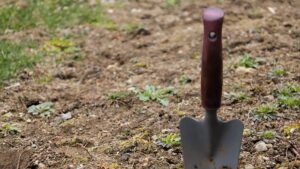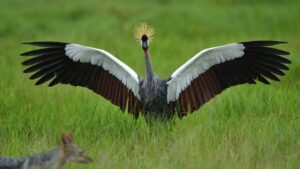Big picture: Sovereign’s natural rutile could clean up pigment industry emissions

Pic: John W Banagan / Stone via Getty Images
An independent study has rewritten the potential for natural rutile from Sovereign’s Kasiya project in Malawi to reduce the titanium pigment industry’s carbon footprint.
The Life Cycle Assessment Study by UK-based consultancy Minviro Ltd found that each tonne of high-grade natural rutile produced at Kasiya is expected to have a Global Warming Potential of just 0.1 tonnes carbon dioxide equivalent.
According to the research this equates to a 95% to 77% reduction in total greenhouse emissions compared to producing titania slag and synthetic rutile respectively.
It will also reduce Scope 3 emissions with the study finding that producing titanium dioxide pigment in the European Union from Sovereign Metals’ (ASX:SVM) natural rutile has the lowest global warming potential versus ilmenite-upgraded alternative feedstocks.
Taken together, paint produced from Sovereign’s natural rutile is estimated to have up to 35% lower carbon footprint than that produced from ilmenite-upgraded alternatives.
In April last year, a similar study by Minviro also found that Kasiya natural rutile could reduce global titanium industry carbon emissions.
“We knew from the previous work done by Minviro that natural rutile has a lower carbon footprint than its upgraded substitutes produced from ilmenite,” managing director Julian Stephens said.
“The expanded study now highlights the significant reduction in greenhouse gas emissions the titanium pigment industry could achieve by utilising natural rutile produced at Kasiya.
“This has direct economic benefits to end users in jurisdictions such as the EU, where industry pays for carbon dioxide emissions via the EU’s Emissions Trading System and the proposed Carbon Border Adjustment Mechanism.”
ESG standards
Sovereign’s Kaisya project is designed considering both the Equator Principles and Scope 1, 2 and 3 emissions under the GreenHouse Gas protocol to ensure that it meets high standard for ESG from the outset.
It benefits from access to hydro-generated grid power and the company intends to install a solar system on site to ensure low carbon power supply for the project.
Additionally, the use of predominantly rail rather than road transport for products will also reduce its carbon footprint.
Further highlighting the company’s focus on ESG, it had in February appointed former Rio Tinto senior executive Nigel Jones as a non-executive director and chairman of its ESG Committee.
Natural rutile champion
Kasiya is the largest undeveloped natural rutile deposit in the world with an overall resource of 605 million tonnes grading 0.98% rutile, about half of which is in the higher confidence Indicated category.
This is likely to be expanded with recent drilling already increasing the size of the mineralised envelope by 28% to 165sqkm.
Under the scoping study, the project is expected to generate after-tax net present value (NPV) and internal rate of return (IRR) – both measures of profitability – of US$861m ($1.2bn) and 36% respectively, at a capital cost of just US$332m.
This is based on throughput of 12 million tonnes to produce 122,000t of rutile and 80,000t of graphite per annum at an operating cost of US$352 per tonne to generate annual earnings before interest, taxes, depreciation, and amortisation (EBITDA) of US$161m.
This article was developed in collaboration with Sovereign Metals, a Stockhead advertiser at the time of publishing.
This article does not constitute financial product advice. You should consider obtaining independent advice before making any financial decisions.
Related Topics

UNLOCK INSIGHTS
Discover the untold stories of emerging ASX stocks.
Daily news and expert analysis, it's free to subscribe.
By proceeding, you confirm you understand that we handle personal information in accordance with our Privacy Policy.








